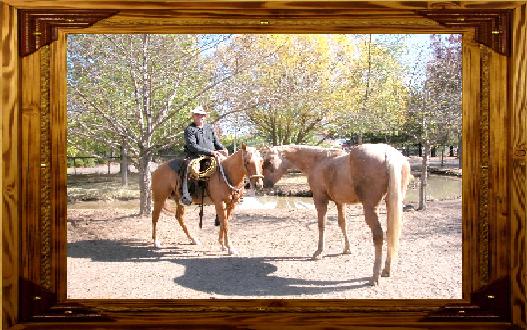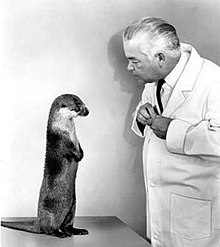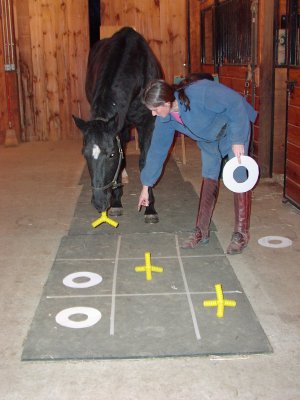I am attending a Parelli Super Course natural horsemanship weekend in a few weeks (at the Nebo showgrounds near Mackay), run by licensed Parelli professionals Carmen Smith and Rob McAuliffe.
What is natural horsemanship?
Basically I believe that Natural horsemanship is the idea of working sympathetically with a horse in order to obtain cooperation while avoiding fear- and pain-based training methods.
Some well-known trainers considered to be practitioners of natural horsemanship in the late twentieth century include: Tom and Bill Dorrance, Ray Hunt, John Lyons, Buck Brannaman, Monty Roberts, and of course, Pat Parelli.
John O’Leary at Horse problems Australia has a detailed history of natural horsemanship on his site, particularly from an Australian point of view.
Like many other forms of horse training (clicker training for example) operant conditioning is the core concept of natural horsemanship, this time in the form of pressure and releases. The basic technique is to apply a pressure of some kind to the horse as a “cue” for an action and then release the pressure as soon as the horse responds, either by doing what was asked for, or by doing something that could be understood as a step towards the requested action, a “try”. Timing is everything, as the horse learns not from the pressure itself, but rather from the release of that pressure, and by reinforcement of the action. As well as knowing how to use pressure and release, body language of the trainer is also key, like how to use your eyes, how to place your body, as well as your tone of voice or lack of voice.
My aim as a new horse owner is gain the respect and trust of my horse so that we will have good relationship and I will be able to ride her safely and with confidence. I think that learning and practicing natural horsemanship is key to this, as is learning how to create the best environment and lifestyle for my horse. To this end I am also looking at paddock care and set up, tack, hoof care and trimming and diet.
There are many natural horse women around too!
In Australia
Cynthia Cooper at my favourite site, Natural Horseworld ,is a Natural Horsemanship Instructor, based in Tasmania, and was previously was a Parelli Instructor and has been teaching Natural Horsemanship for the last 10 years.

Georgia Bruce is from Kuranda in Far North Queensland (about 8 hours of north of where I am in Mackay). She has represented Australia in Dressage on eight occasions, most recently at the 2008 Paralympic Games. She specializes in training young horses and retraining problem horses and gives lessons and clinics around Australia , and has founded Click with Horses horse training website.

Jenny Pearce in Victoria is an advanced kinesiologist, a master of reiki healing and a Melchizideck master and helps both horses and riders.
Fire Horse Inspirations is the website of Michelle Harris, a South Queensland based horse trainer who is amazingly inspirational. Her displays with up to nine horses at liberty at one time, are extraordinary.
Carmen Smith is a licensed Parelli professional based in Cairns, North Queensland, and has been involved in the Parelli program for the last 15 years, including 5 years working at the Parelli Centres in the USA & the UK. Carmen runs clinics throughout Australia, and has a passion for helping students to live their dream with their horse.....to be able to understand how your horse, thinks, acts and plays.
Wrangler Jayne is an internationally respected natural horsemanship instructor, having been influenced mainly by Pat Parelli, and master horseman, Australian Philip Nye. Jayne is a dedicated advocate of bare hooves, bit-free communication and natural, holistic horse keeping, and does not lend her support to organisations or industries that exploit the horse’s rights, such as horse racing and rodeos.
In New Zealand
Hertha James at Safe Horse teaches natural horsemanship for safe horse ownership, as well as clicker training.
In the UK
Rio Barrret of Oakwood horsemanship studied Parellis’ Natural Horsemanship programme for several years, both in the UK and at his ranch in Colorado, USA. She passed my Level 3 and in 2001 and graduated as an instructor in Parelli Natural Horsemanship, later chosing to work independently, teaching and demonstrating all over the south of England.
Kelly Marks at Intelligent horsemanship is a protégée of Monty Roberts.

Lynn Henry is the founder of Think like a pony, and author of natural horsemanship books aimed at children. She is has studied and trained with some of the leading figures in horsemanship and is a horse and human healer, having qualified as a horse Iridology practitioner and a Shiatsu for horses .
In the US
Karen Rohlf at Dressage, naturally, trained over 20 years in dressage with Anne Gribbons ('O' dressage judge, International Grand Prix trainer and competitor) and studied Parelli Natural Horsemanship
Leslie Desmond, is a horsemanship coach after Bill Dorrance, whose main goal is to teach others how to teach their students to develop a reliable partnership that is based on feel.
Now world wide, Tellington TTouch was developed by Linda Tellington and is a specialized approach to the care and training of our all animals, as well as for the physical and emotional well-being of humans
Liz Mitten Ryan is an expert in Horse Herd Language, natural horse training, therapy with horses, horse programs, equine programs and Horse and animal communication, as well as a talented artist, and also has a site dedicated to Natural Horse Friendship.
Centered Riding was developed by Sally Swift, author of the best-selling books and videos , and is now available internationally via lessons from Centered Riding instructors.
Stacey Westfall is a Freestyle Reining champion, currently building the Westfall Horsemanship approach to create a program that is efficient and effective — with resources to compliment the clinics such as DVDs and equipment.
There are so many websites and books, and so much information. Although I love the Parelli method, I think there is something to learn from every natural horseman or women out there, professional or not.
My favourite natural horseman at present does not have his own method, training dvds or books, but has a great website and heaps of FREE training videos and info. Not everyone likes him, as he is forthright and outspoken, especially against women who treat horses like pets and not horses, but I think he has a lot of great info. Check out Rick Gore’s site at Think Like a Horse.

And as Rick says, Happy trails!
Deb






![Equine Fusion Hoof Boots red/black [pair]](http://www.horsefx.com.au/wp-content/uploads/grass-186x186.jpg)
![Cavallo Simple Hoof Boot [pair]](http://www.horsefx.com.au/wp-content/uploads/simpleboothr.jpg)












 source
source 


















